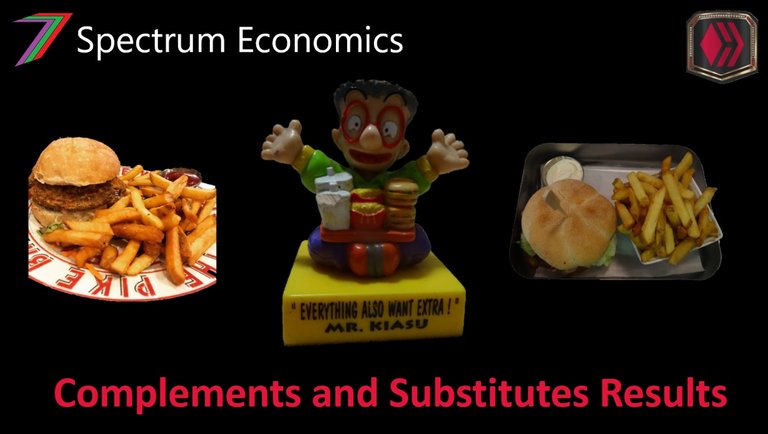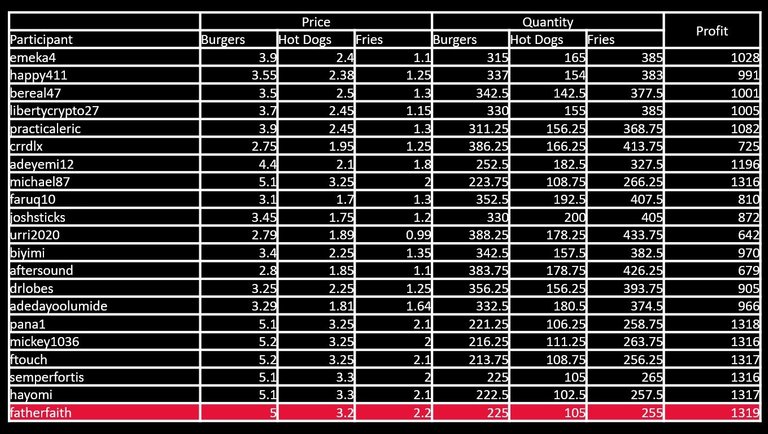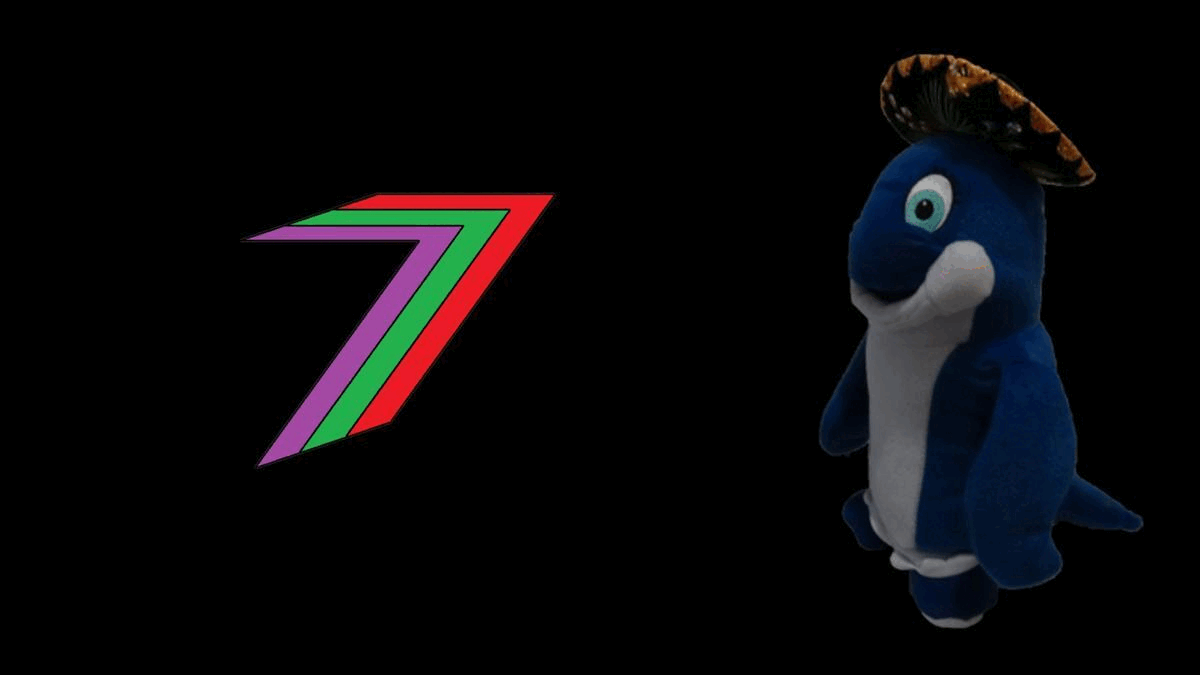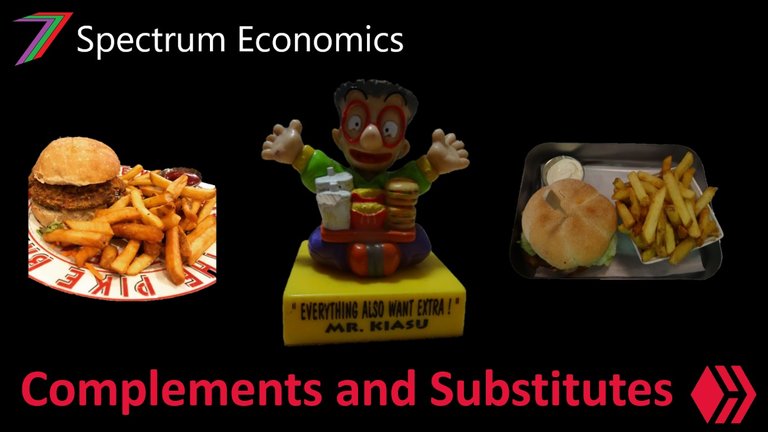Hi Everyone,

Welcome to the results post for the Complements and Substitutes Challenge. During the month of August, I will post all the results of the 2023 Economics Challenge Series. I will gradually work through all the seven challenges posted in July.
What is the Complements and Substitutes Challenge?
In this challenge, participants were required to price three food items sold at the same store. For this challenge, the three food items were burgers, hot dogs, and fries. Burger and hot dogs were assumed to be substitutes for each other and fries were assumed to be complementary to both burgers and hot dogs. If the food items are substitutes, they are in competition with each other. Therefore, if a person buys a hot dog they were assumed less likely to buy a burger. If food items are complementary, buying one encourages the buying of the other. We assumed fries were treated as a side to accompany a burger or a hot dog. However, many people may still wish to buy just one item on its own. Therefore, they were not assumed to be perfectly complementary.
The participants were required to set the prices of burgers, hot dogs, and fries. The aim was to maximise total profits. Participants were provided with variable costs and inverse demand functions for the food items. There were no fixed costs and participants were not required to work with a budget. For this question, no information was required to be generated by any model.
The format of the required entry is explained in detail in the challenge itself.
For a more detailed explanation, you can access the challenge post using the following link.
Other challenges
Below are the links to all seven challenges in the series.
- Challenge 1: Buying and Selling Game
- Challenge 2: Pick-a-Door
- Challenge 3: Complements and Substitutes
- Challenge 4: Buying and Selling Game (Business Version)
- Challenge 5: Ice Cream Game
- Challenge 6: Game Theory Game
- Challenge 7: Even-to-Win
Results of Challenge 3
This is the most mathematical and theoretical challenge of this series. An optimal combination of prices for all three goods (burgers, hot dogs, and fries) can be determined mathematically based purely on the information provided.
For this challenge, profit is determined by the following equation.
Profit = Price × Quantity – Variable Cost (per unit) × Quantity
Participants are required to set the prices and the quantities are determined based on these prices and the inverse demand functions provided. Below are the inverse demand functions for burgers, hot dogs, and fries.
Inverse Demand Functions
PB = 8 – 0.02QB – 0.01QH + 0.01QF
PH = 5 – 0.02QH – 0.01QB + 0.01QF
PF = 4 – 0.02QF + 0.01QB + 0.01QH
Legend:
PB – Price of burgers
PH – Price of hot dogs
PF – Price of fries
QB – Quantity of burgers
QH – Quantity of hot dogs
QF – Quantity of fries
To determine quantity demanded, the inverse demand functions need to be rearranged so that the quantities become the subject of the equations instead of price. Below are the rearranged equations, also referred to as demand functions.
Demand Functions
QF = (25 - PH – 3PF– PB)/0.04
QH = (11 – 3PH + PB – PF)/0.04
QB = (23 - 3PB + PH – PF)/0.04
The provided variable costs can be entered directly into the profit equation. Variable costs are below.
Variable Costs
AVCB = 2
AVCH = 1.2
AVCF = 0.5
Legend:
AVCB - Average Variable Cost Burgers
AVCH - Average Variable Cost Hot Dogs
AVCF - Average Variable Cost Fries
Table 1 contains the prices set by all the participants, the quantities demanded at these prices, and the profits obtained from these prices and quantities.
Table 1: Price, Quantity, and Profit

The winner of Challenge 3 is @fatherfaith. He managed to determine almost exactly the optimum prices for all the goods to achieve the highest possible profit. He obtained a profit of $1319. Several other participants obtained very similar profits to @fatherfaith (within $4). @pana1 came second obtaining a profit of $1318. I would also like to mention @micheal87 for being the first participant to determine prices very close to the optimum.
As there were more than 12 participants, the prize for this challenge is 60 Hive Power. @fatherfaith wins 40 Hive Power and 40 points. @pana1 wins 20 Hive Power and 20 points. I would also like to award @micheal87 20 points for his efforts.
Challenge Tips and Analysis
I recommend rearranging the inverse demand functions to make the quantity the subject of the equation. This makes it easier to determine the impacts of raising and lowering price. Optimum pricing for maximising revenue and profits can be obtained using calculus. This is reasonably complicated for anyone not mathematically inclined. Alternately, participants can use trial and error methods of raising and lowering prices. With the use of Microsoft Excel, it is possible to find a combination of prices that is very close to the optimum price. I would argue this method would be preferred over calculus, which is tedious and the chances for error are quite high.
The responses made by @mickey1036, @ftouch, @semperfortis, and @hayomi are illogical if we assume they intended to win this challenge. It appears that these participants were aware that @pana1’s responses were close to the optimum prices. Instead of tweaking their answers to generate a higher profit they tweaked them to generate a lower profit. This behaviour is disappointing, it is an indication of attempted manipulation of results and possible collusion. This is not in the spirit of this challenge series.
Overall Series Score
After three challenges, the overall scores for the Challenge Series are as follows.
| Position | Participants | Points |
|---|---|---|
| 1 | Fatherfaith | 45 |
| 2 | Ftouch | 30 |
| 3 | Practicaleric | 25 |
| 4 | Pana1 | 20 |
| 5 | Micheal87 | 20 |
| 6 | Wealthwess | 15 |
| 7 | Semperfortis | 10 |
| 8 | Emeka4 | 5 |
This table will be updated in every results post.
More posts

I have several collection of posts. I have organised these collections based on content and purpose.
The first collection contains six collection posts created before PeakD had the collection feature. Four of these posts relate to the core of my content, one of them contains all my Actifit Posts, and one of the them contains my video course ‘Economics is Everyone’.

The second collection consists of the posts that I consider define my channel. These posts are significant in terms of content as well as how they contribute to the growth of the channel. These posts reveal the most about what I believe in.

The third and fourth collection is what I call my ‘Freedom-base Economics living book’. They contain all the posts that support my ideas about the value and power of freedom. Some of these posts explain what we can achieve with freedom and what we need to utilise it. Some of them explain how we are deprived of freedom and how we often give up freedom for security and comfort. The third collection concludes with possible scenarios depending on what we (society) choose to do.


Hive: Future of Social Media

Spectrumecons on the Hive blockchain


Congratulations to those who are still winning and we still hope for the best from others as well
Congratulations for the winners. They all do very well and others are also do very good.
Congrats to the winners.
Wawu 🥺
Congratulations to the winner
This post has been manually curated by @steemflow from Indiaunited community. Join us on our Discord Server.
Do you know that you can earn a passive income by delegating to @indiaunited. We share more than 100 % of the curation rewards with the delegators in the form of IUC tokens. HP delegators and IUC token holders also get upto 20% additional vote weight.
Here are some handy links for delegations: 100HP, 250HP, 500HP, 1000HP.
100% of the rewards from this comment goes to the curator for their manual curation efforts. Please encourage the curator @steemflow by upvoting this comment and support the community by voting the posts made by @indiaunited.
Happy to win this. My calculus knowledge is not a waste after all 😂